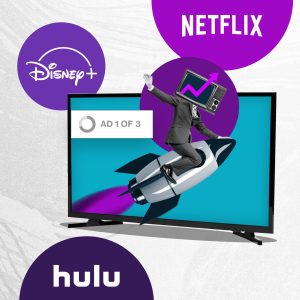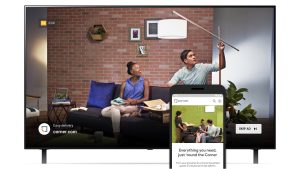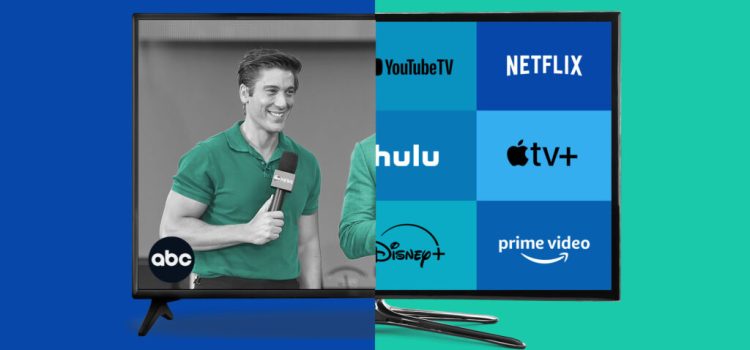
Introduction
Over the past few years, the way we watch TV has changed. Traditional TV, like cable and satellite, is no longer the only option. Streaming services such as Netflix, Hulu, and Amazon Prime have taken over. This shift has made advertising on these platforms a powerful tool for marketers. Streaming TV advertising is now one of the most effective ways to reach viewers. In this article, we’ll look at what marketers need to know about streaming TV advertising, its benefits, challenges, and the latest trends.
What Is Streaming TV Advertising?

Streaming TV advertising is simply ads shown on internet-based TV services, like Netflix or Hulu. These ads appear on platforms that stream video content directly to viewers’ devices, such as smart TVs, phones, or computers. Unlike traditional TV, which often shows ads to everyone, streaming TV allows marketers to target ads to specific groups of people. This is done using data about viewers’ preferences, location, and interests.
Why Is Streaming TV Advertising Important for Marketers?
There are many reasons why streaming TV advertising is gaining popularity among marketers:
- Targeted Ads: Streaming platforms gather a lot of information about viewers, so ads can be shown to the people most likely to be interested in them.
- Affordable: Compared to traditional TV, advertising on streaming platforms can be cheaper and more effective, especially since you’re reaching a more specific audience.
- Flexibility: Streaming services offer different types of ads, such as ads before, during, or after a show. This flexibility lets advertisers pick the right format for their campaign.
- Easy Tracking: Streaming TV ads can be tracked in real time. Marketers can see how many people watched the ad, clicked on it, or interacted with it, making it easier to adjust campaigns for better results.
- Interactive Options: Some streaming services allow ads where viewers can interact, such as clicking on a product or signing up for a service, which can lead to better engagement.
The Role of Streaming TV Advertising

Streaming TV advertising plays a big role in helping marketers connect with their audience. Unlike traditional TV, which shows ads to a large group of people, streaming allows businesses to target ads to the right viewers. This makes ads more effective and ensures that businesses are spending their advertising budget wisely. With more people watching TV online, streaming ads have become a key tool for many companies.
Top Trends in Streaming TV Advertising
Streaming TV advertising is always changing. Here are some of the biggest trends in 2024:
- Connected TV (CTV): More people are watching content on smart TVs. This is important because it creates new opportunities for advertisers to reach viewers on their TVs instead of just on computers or phones.
- Programmatic Advertising: This is when ads are automatically placed by technology instead of manually. Programmatic advertising is growing in streaming TV because it helps advertisers reach the right people at the right time.
- Ad-Supported Streaming Services: More people are turning to free streaming platforms that show ads. This creates more space for advertisers to reach viewers who don’t want to pay for subscriptions.
- On-Demand Video Ads: These ads appear before or after a viewer watches a show or movie on demand. They offer a non-intrusive way to advertise to viewers.
- Personalization: As platforms collect more data on viewers, they are able to show ads that are highly personalized. This increases engagement and effectiveness.
How Can Marketers Make the Most of Streaming TV Advertising?

To get the best results from streaming TV ads, marketers can try the following strategies:
- Use Data Wisely: Take advantage of the data streaming platforms offer. By understanding viewers’ habits and preferences, marketers can deliver more relevant ads.
- Test and Improve Ads: Streaming platforms allow real-time tracking, so marketers can easily test different types of ads and see which ones work best. This makes it easier to adjust campaigns and improve results.
- Engage Viewers with Interactive Ads: Ads that let viewers click, shop, or engage in other ways can lead to better results. Use these interactive features to encourage action.
- Advertise Across Multiple Platforms: Since the audience is spread across many platforms, it’s a good idea to advertise on more than one streaming service. This helps increase reach.
- Stay Flexible: The streaming world is always changing, so marketers should be ready to adapt to new trends and features as they arise.
Why Streaming TV Advertising Is Gaining Popularity
Streaming TV advertising is becoming more popular because it offers a lot of advantages. More and more people are choosing to watch TV online, and they are spending less time with traditional cable or satellite TV. This shift is making streaming platforms the best place for advertisers to reach people. Unlike regular TV, where ads are shown to everyone, streaming ads can be targeted to specific groups based on what people watch and their interests.
How Streaming TV Ads Work

Streaming TV ads work by using data to show relevant ads to the right people. For example, if someone frequently watches cooking shows, they may see ads for kitchen gadgets or food delivery services. These ads are shown before, during, or after a show. Some platforms even allow ads that people can interact with, such as clicking to learn more about a product or signing up for a service. This makes the ads more engaging and useful for viewers.
The Cost Advantage of Streaming Ads
One of the main reasons marketers are choosing streaming TV advertising is the cost. Advertising on traditional TV can be very expensive, especially for prime-time slots. On the other hand, streaming platforms often offer more affordable options, even for smaller businesses. This makes it easier for companies of all sizes to reach their target audience without breaking the bank. Plus, streaming ads can be customized and adjusted more easily, which helps companies get better value for their advertising budget.
Personalization in Streaming Ads

Personalization is another big advantage of streaming TV advertising. Because streaming platforms gather data about their viewers, they can show ads that match people’s tastes and preferences. For example, a viewer who watches a lot of sports may see ads for sports equipment or tickets to live events. This type of personalization helps ads feel less like interruptions and more like something useful. It also increases the chances that viewers will take action after seeing an ad, such as visiting a website or making a purchase.
Reaching a Targeted Audience
One of the biggest advantages of streaming TV advertising is the ability to target a specific audience. Unlike traditional TV, where ads are shown to everyone, streaming platforms collect data about viewers’ habits and preferences. This means advertisers can show their ads to people who are more likely to be interested in their products or services. For example, if someone watches a lot of fitness videos, they might see ads for gym memberships or workout equipment. This targeted approach makes ads more relevant and can improve the chances of making a sale.
Tracking the Success of Ads

Another benefit of streaming TV advertising is the ability to track how well an ad is performing. On traditional TV, it can be hard to know exactly how many people saw your ad or how effective it was. But with streaming, marketers can get detailed information about how many people watched the ad, how long they stayed engaged, and whether they took any actions, like visiting a website or purchasing a product. This data helps marketers adjust their strategies and improve the effectiveness of their ads over time.
Challenges of Streaming TV Advertising
Even though streaming TV advertising has many advantages, there are still some challenges marketers face:
- Skipping Ads: Many people use services that let them skip ads, which can make it harder to reach them.
- Too Many Platforms: With so many streaming services available, it’s tough to reach a wide audience. Different platforms attract different viewers, so advertisers may need to target specific services.
- Too Much Data: Streaming platforms collect lots of data, but it can be overwhelming. Marketers need to know how to use this data to make the best decisions.
- Ad Fatigue: If viewers see the same ads too often, they may get annoyed or ignore them, which can reduce the effectiveness of the campaign.
The Future of Streaming TV Advertising

The future of streaming TV advertising looks bright. As more people move away from traditional TV and turn to streaming services, advertising on these platforms will continue to grow. We can expect to see more personalized and interactive ads, giving viewers a more engaging experience. Marketers will also continue to use data to improve targeting and ensure that their ads reach the right people at the right time.
Comparing Traditional TV vs. Streaming TV Advertising
To see how streaming TV advertising stacks up against traditional TV, let’s compare the two:
| Feature | Traditional TV Advertising | Streaming TV Advertising |
|---|---|---|
| Targeting | Limited to broad demographics | Can target specific interests and behaviors |
| Cost | Expensive for ads and production | Generally cheaper with more flexibility |
| Tracking Results | Harder to measure | Easy to track and adjust in real time |
| Ad Formats | Fixed ad times and lengths | Flexible formats (pre-roll, mid-roll, etc.) |
| Viewer Interaction | Low – viewers can’t interact with ads | High – clickable and interactive ads |
| Audience Reach | Broad, reaches large groups | Niche, more focused groups |
Analysis Table: Key Insights on Streaming TV Advertising
| Aspect | Why It Matters | Actionable Tip |
|---|---|---|
| Targeting Capabilities | Ads are more effective because they reach the right people. | Focus on targeting based on viewers’ habits and preferences. |
| Cost Efficiency | Can be cheaper than traditional TV ads. | Consider using ad-supported platforms to save money. |
| Measurable Performance | You can track and adjust campaigns in real time. | Use data to optimize ads for better results. |
| Viewer Engagement | Interactive ads can lead to higher engagement. | Use ads that viewers can click or interact with. |
Conclusion
Streaming TV advertising is here to stay, and it’s growing rapidly. It offers unique benefits like better targeting, lower costs, and measurable results. However, challenges such as ad skipping and fragmented audiences still exist. By keeping up with the latest trends and using data to drive decisions, marketers can make the most of streaming TV ads in 2024 and beyond.










